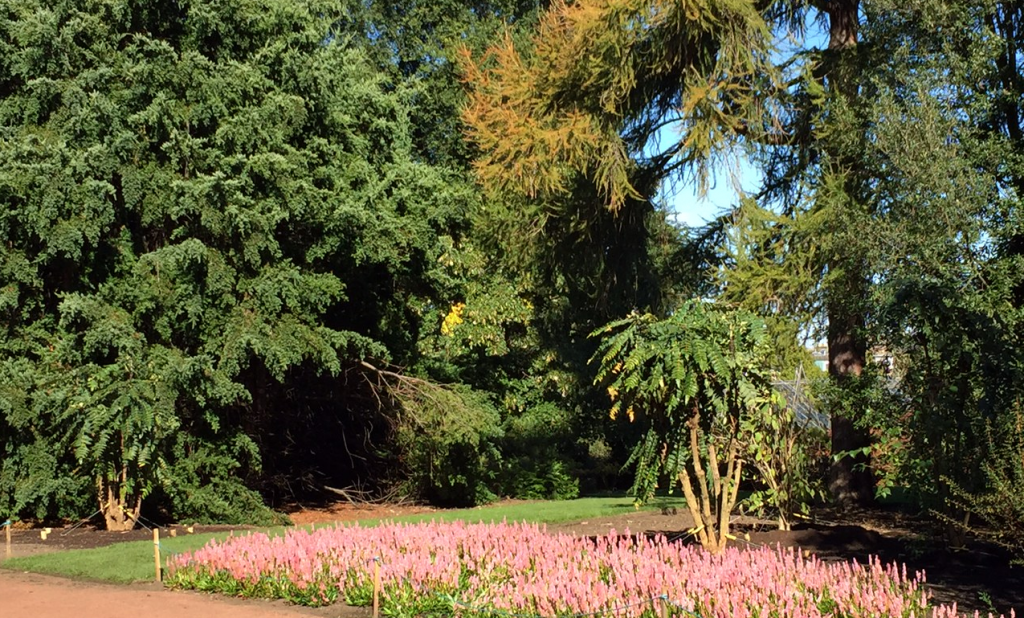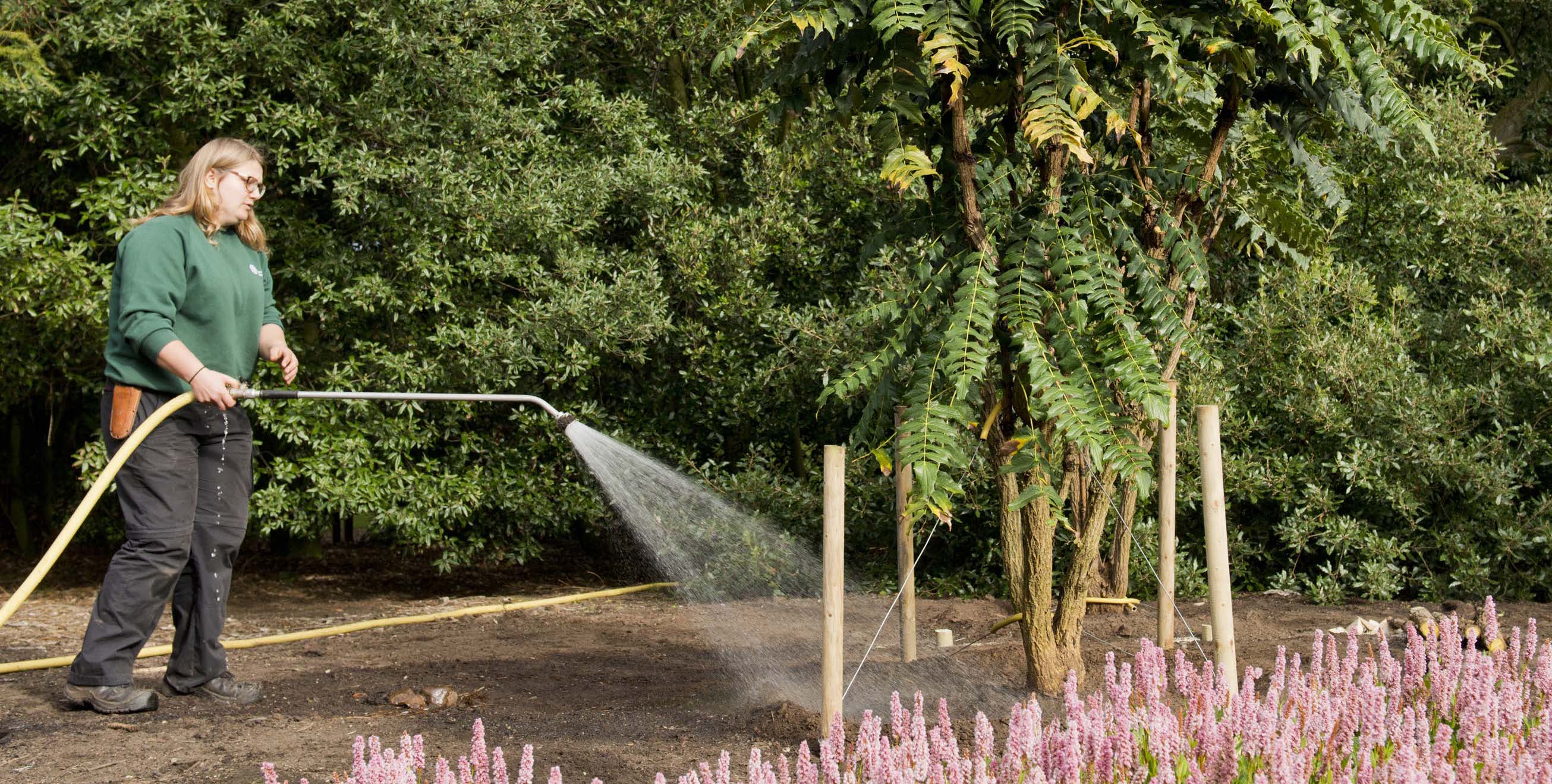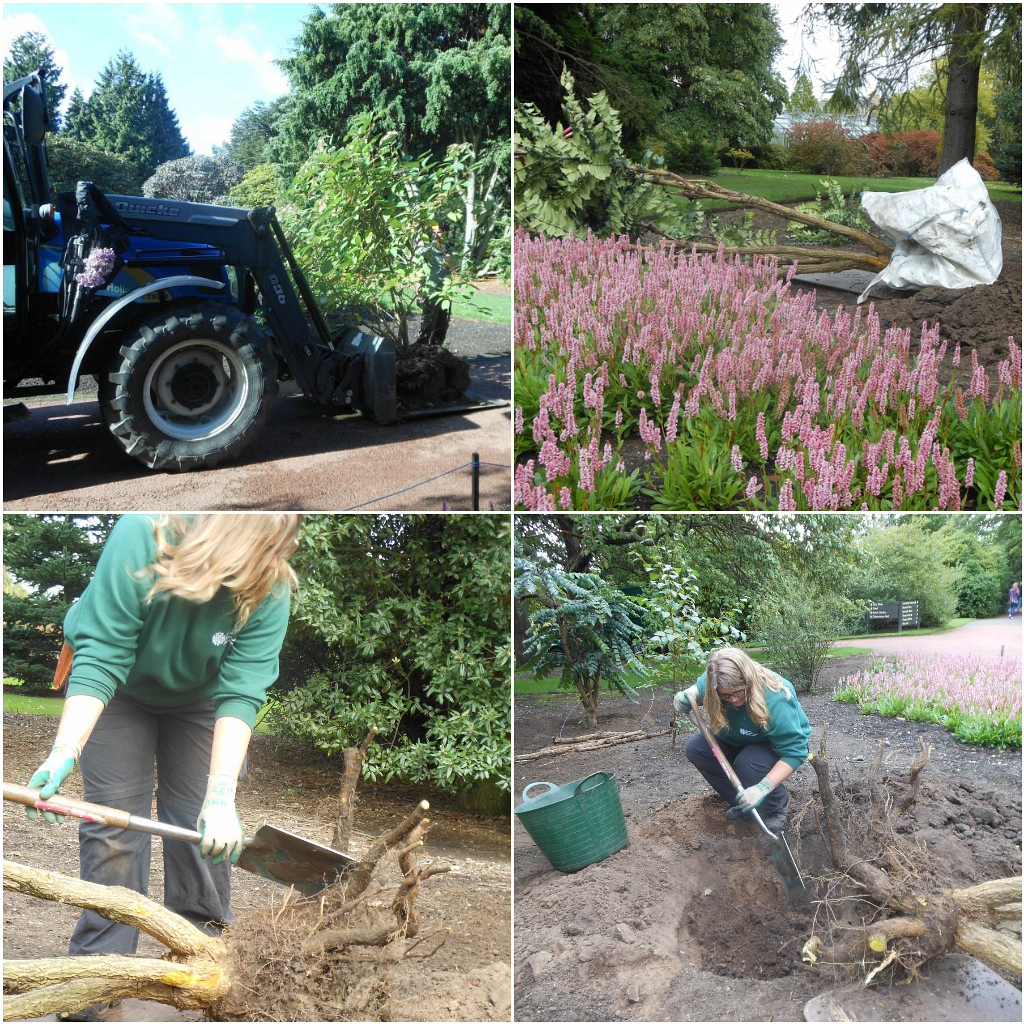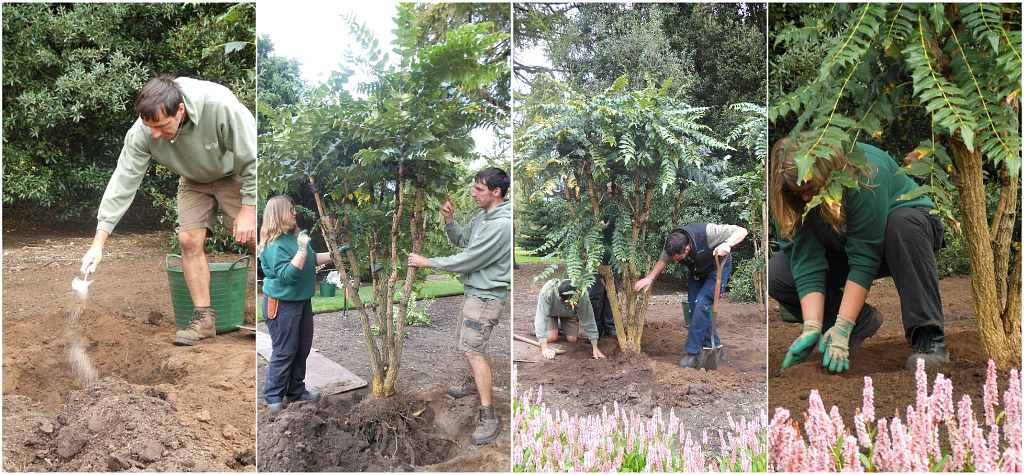There have been Nepalese species growing at RBGE for as long as anyone can remember and at the moment there are 529 accessions of plants which either come from or were collected in Nepal. This year a dedicated area is being developed to showcase the very best of these all in one place at the top of the azalea lawn with a view on to the front range of glasshouses. Horticulture staff are going all out in order to get it ready for the celebrations of 200 years of friendship between Britain and Nepal in March 2016.

Nepal is a plant lover’s heaven with about 7000 species of flowering plants and conifers found there, growing in the steamy jungles of the lowlands up to nearly 6000m in the mountains. Many Nepalese plants will be familiar to British gardeners; such as the winter-flowering shrubs Viburnum grandiflorum, Sweet box, Sarcococca confusa, many rhododendrons and some of the blue poppies.
Spring is a good time to establish plants, but September is an ideal time to plant up beds. The soil is still warm from the summer but it is less dry due to autumn rains and lower temperatures. The lower air temperatures and light levels also provide better planting conditions because the air and soil do not dry out as quickly as they do in summer.
There will be a mix of herbaceous species, shrubs and trees planted here and the first of these new plantings was a specimen of Rhododendron arboreum which yields the bright red national flower of Nepal known as ‘laligurans’. It was planted in March 2015 by the Regius Keeper and Yam Bahadur Thapa, then Director General of the Department for Plant Resources (DPR) in Kathmandu, when they met to sign the MOU between RBGE and the DPR.
Other plants have been relocated from other parts of the garden or are being grown on in the nursery and alpine yard. The arboricultural team along with apprentice Jennifer Wright have been moving large specimens of Mahonia napaulensis and Hydrangea heteromalla this week from where they had grown so large they were shading out the office windows. They were carefully dug up, maintaining as much as possible of the rootball, and carefully shortening the roots. Some of the plants were nearly 3m tall. These had to be reduced in height both to reduce transpiration from the leaves and because they could blow over easily having lost a proportion of their roots. The top material was removed with consideration of how the plant would look once in position. Pruning needs to be aesthetically pleasing as well as functional.
While the plants were waiting to go into their new positions the rootball was wrapped in a large bag or hessian to prevent the roots from drying out and any further damage. Moving a plant puts it under a lot of stress and this needs to be reduced in any way possible. The rootball is measured with a spade so that a hole of the correct size can be dug. When the hole is the right size a mound is made at the bottom so that the roots can be placed over it and a pre-planter fertiliser is mixed into this soil. In general it is not advisable to over-fertilise a planting hole. Too many nutrients will discourage the plant from seeking nutrients by putting out more strong roots, and it will grow ‘soft’ and less able to withstand leaf eating pests.
When the straight-sided hole is ready the plant is eased into it, with these large plants two people are needed to hold it and a third to check that it is straight with its ‘best side’ showing. All plants have a ‘front’ and ‘back’ and in the public garden of course the front should face the main viewing angle or path. Once in and straight with the root flare – where the roots start to emerge from the trunk – level with the level of the soil, the hole is backfilled and carefully heeled down after every few spadefuls. If the area has been heavily planted before more fertiliser is added at this stage.
It is important to be systematic and patient when planting. It is often a task which takes longer than imagined. Care and attention to detail are rewarded by a plant which establishes well and quickly and will require less attention in the future.
Once the planting hole has been filled in, firmed down and levelled off, a watering bund is made and the plant is watered. Newly planted plants need an abundance of water to encourage new root growth. The bund ensures that the water remains in the rootball area.

Finally the plant is staked. With such a reduced rootball, it is unlikely to stay upright in winter winds on its own. Note that with these stakes the trunk is protected from the metal wire with a length of old hosepipe which also spreads the pressure exerted by the wire.

The ‘Nepalese area’ as it is fast becoming known, is starting to take shape and due to the use of mature plants and careful transplantation, and it could look deceptively mature by the time celebrations begin in March 2016.


